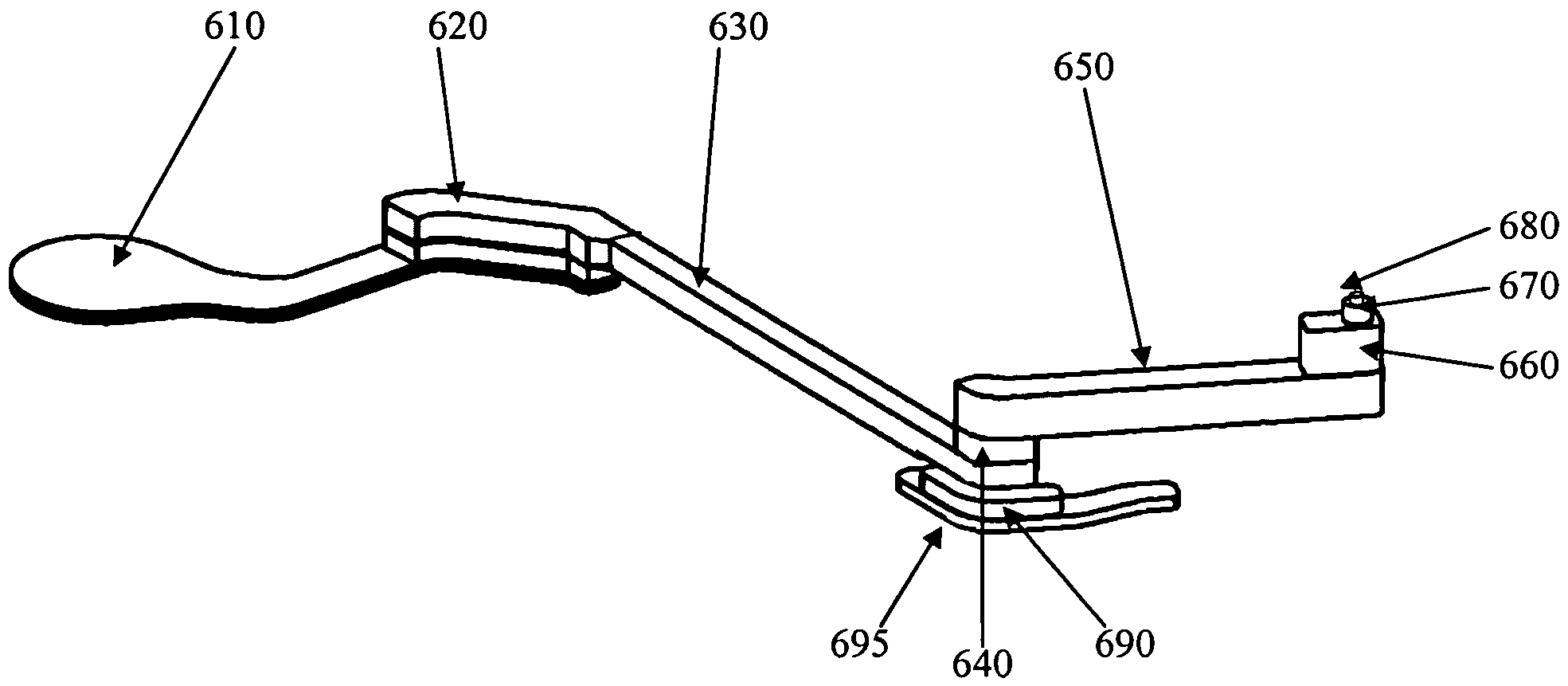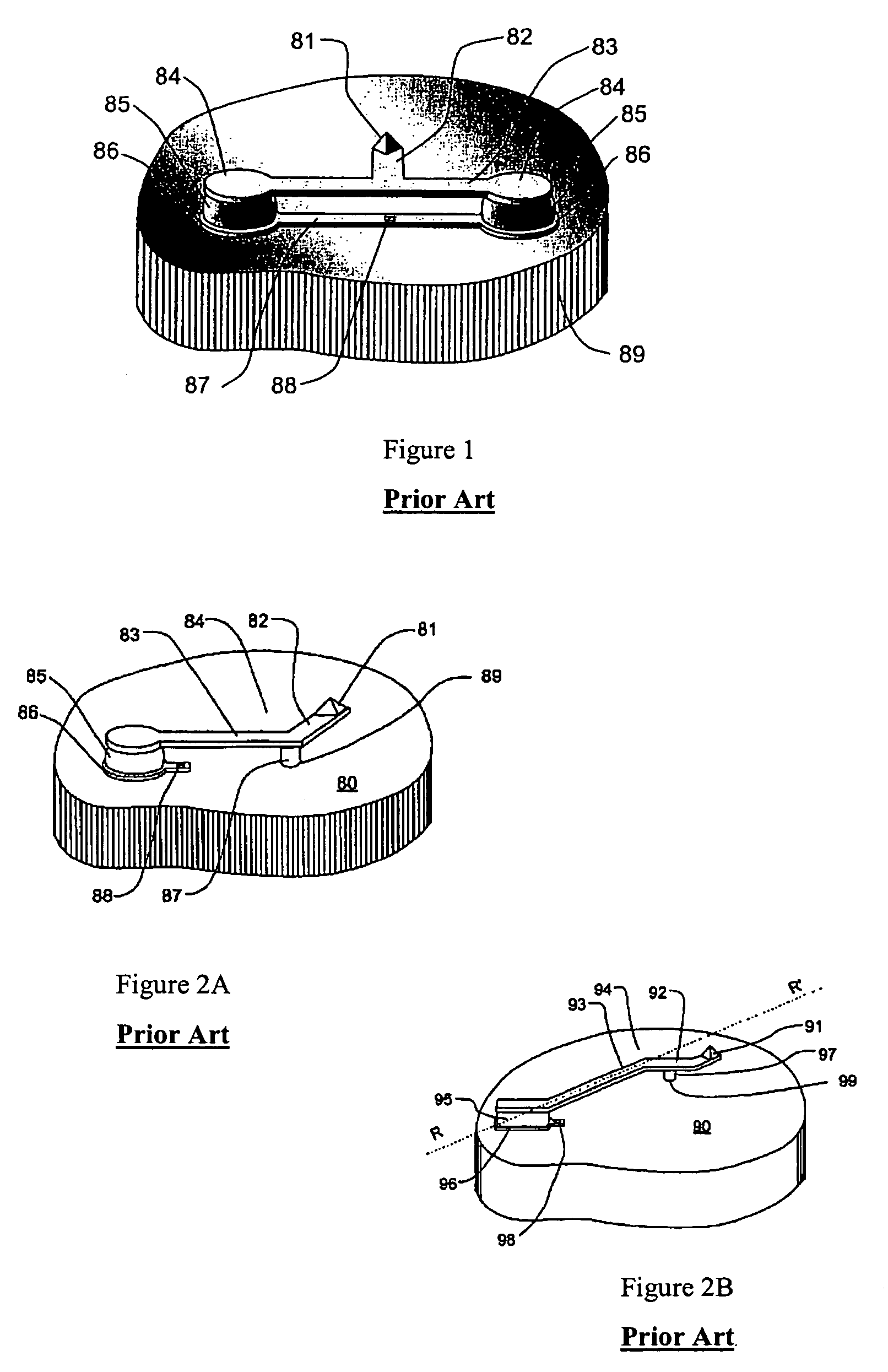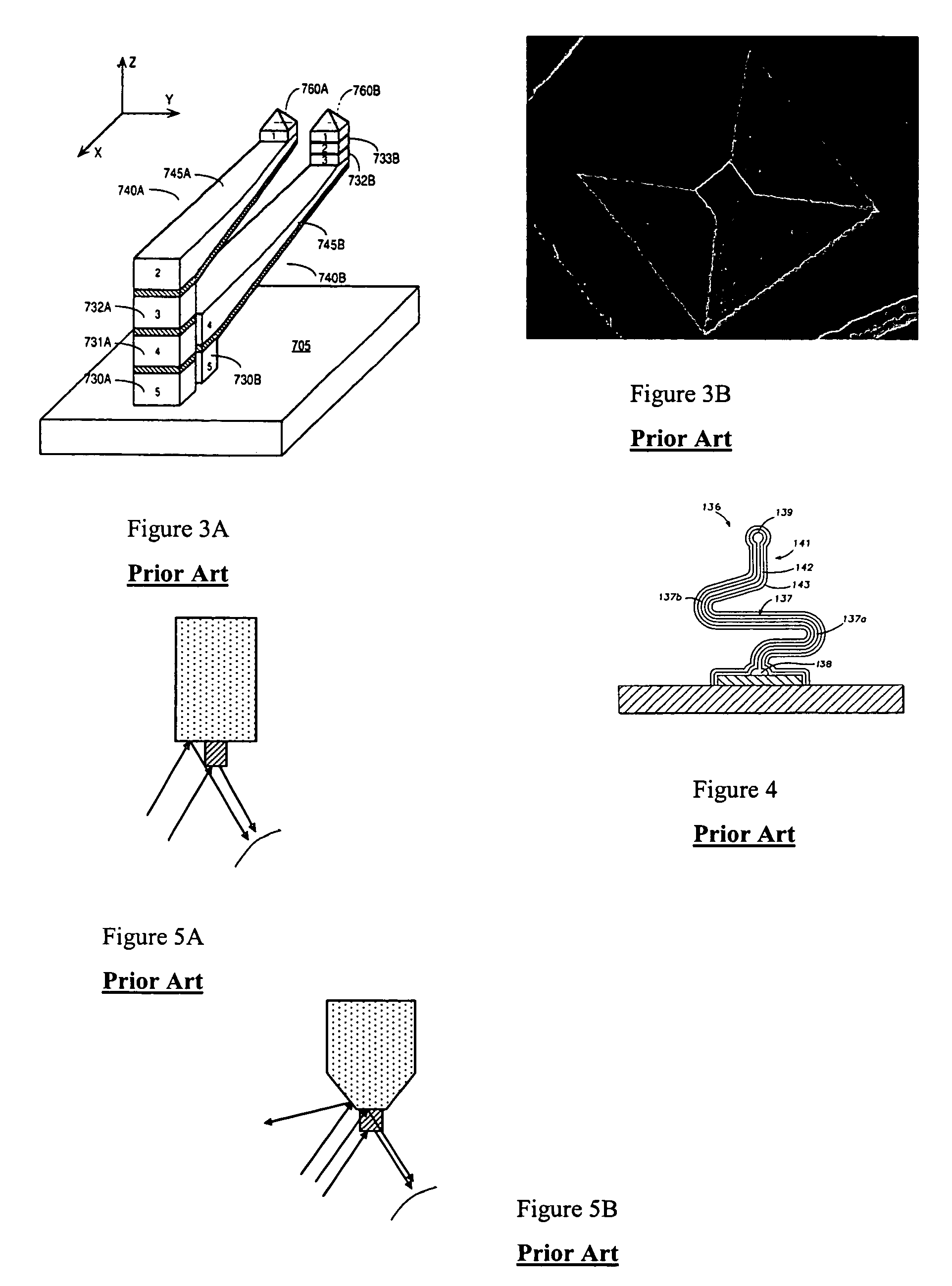Torsion spring probe contactor design
a technology of contactors and springs, applied in the field of probe contactors, can solve the problems of design limitations, too long cantilever wire probes, and difficult to accurately assemble, and achieve the effect of high contras
- Summary
- Abstract
- Description
- Claims
- Application Information
AI Technical Summary
Benefits of technology
Problems solved by technology
Method used
Image
Examples
Embodiment Construction
[0042]FIG. 6A shows a probe for testing an electronic device in accordance with an embodiment of the present invention. This embodiment of the probe incorporates a substrate 600, a trace layer 610, a foot element 620, a torsion bar 630, a spacer element 640, an arm 650, a post 660, a secondary post 670, a tip 680, and a stop element 690. Plated on a substrate 600 is a trace layer 610 providing an electrically conductive path from the foot 620 to a via 900 (see FIG. 9) in the substrate 600. This trace layer 610 may be electroplated gold having a nominal height (also termed thickness) of 16 um. The foot 620 provides the mechanical anchor for the probe. The foot 620 has both a proximal end (the end closest to the via 900) and a distal end (the end furthest from the via 900). The foot 620 is connected to a torsion bar 630 at its distal end. The torsion bar 630 is the element which provides the probe with its spring like (or compliant) qualities because when it is in an actuated state (i...
PUM
 Login to View More
Login to View More Abstract
Description
Claims
Application Information
 Login to View More
Login to View More - R&D
- Intellectual Property
- Life Sciences
- Materials
- Tech Scout
- Unparalleled Data Quality
- Higher Quality Content
- 60% Fewer Hallucinations
Browse by: Latest US Patents, China's latest patents, Technical Efficacy Thesaurus, Application Domain, Technology Topic, Popular Technical Reports.
© 2025 PatSnap. All rights reserved.Legal|Privacy policy|Modern Slavery Act Transparency Statement|Sitemap|About US| Contact US: help@patsnap.com



